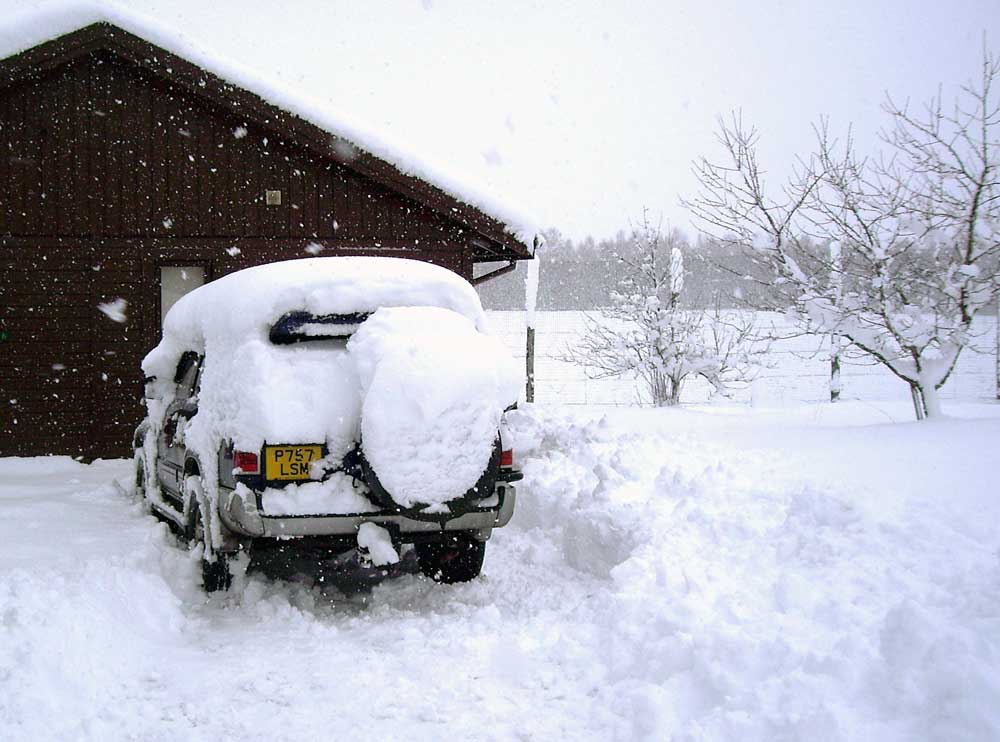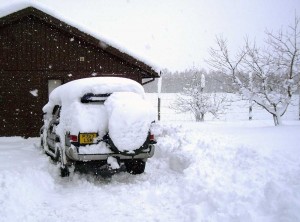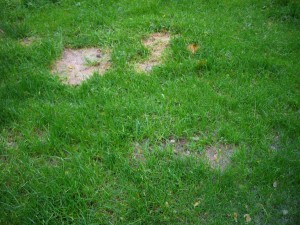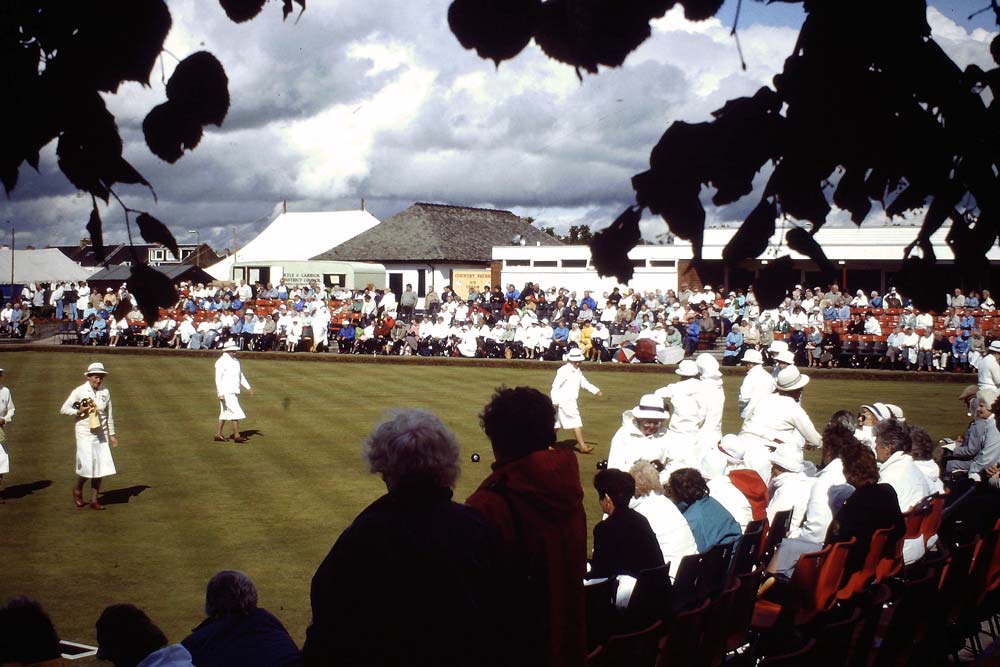
Lawn Mowing and Moss Control Over the Winter Grass Care Season
“Winter lawn maintenance?” I hear you cry. “Surely Winter is a time to leave my grass alone!”

This is the normal reaction when the question of winter lawn maintenance or winter grass care is raised, commonly accompanied by a shiver and an overwhelming desire to stay indoors, next to the fire. After all, snow, wind and ice doesn’t exactly make for a pleasant or fun gardening experience.
Well, I am afraid to say that a lawn does need maintained in the Winter, and the more diligently this work is carried out, the more benefit you’ll draw from that work when the following Spring and Summer come around.
This is a 2-part article dealing with winter lawn maintenance. This is the first article, featuring:
- an introduction to winter grass care and why it’s required
- how to change your lawn mowing habits over winter to best care for you lawn
- Why you shouldn’t use fertiliser over the winter if you want healthy grass
- What lawn supplements to use in the winter season, especially to control the growth of moss
Part 2 of this article (linked at the bottom of this page) looks at:
- Aerating and Lawn Aeration over the winter
- Tidy-up jobs such as lawn edging over the cold months
Why You Need to Care For Your Lawn Over the Winter
The climate we experience in the British Isles means that grass rarely stops growing for any length of time. There are exceptions of course, as in the past two Winters (2009 and 2010), and there are vast differences depending on where you are situated geographically, but, on the whole, your lawn will require at least a few trims over the Winter months.
How to Adjust your Lawn Mowing Height For Autum and Winter
In a fine turf situation like a bowling or golf course green the mowing height will be increased by approximately fifty per cent over the autumn period to give the sward a little protection from the Winter weather, but on a domestic lawn I believe that unless it is being mowed at eight mm or below, the cutting height can remain the same throughout the year.

My general rule of thumb for getting the lawn mower out during the Winter is that if the grass is more than fifty per cent above normal height then it requires cutting. When you mow your lawn, make sure you leave no accumulations of grass cuttings lying around on the surface as, especially in winter, this results in suffocation, as illustrated on the right.
The fifty per cent rule comes about because mowing more than that percentage from the leaf blades in one go has been proven to weaken the plant. This weakening gets progressively larger the more you mow off your lawn at any one time. It follows that a weakened grass plant will be more prone to damage from disease, wear, or severe weather.
If you’re looking a new mower, check out my recommended budget mower and cordless mower.
Preparing for a Winter Lawn Mowing
It is always important to make sure the grass surface is clear of any debris before mowing your lawn, but this is even more important in the Winter as the cold, windy and wet weather will result in leaves, twigs and other objects that will damage the lawn mower if not cleared.
Worms are also most active near the surface at this time of year so it is very important to break up the casts before mowing by brushing. This is because worm casts cause serious scarring on your lawn if flattened due to the suffocation produced by a flattened cast. Even worse, they also create an ideal seed bed for weeds to germinate.
Using Iron to Control Lawn Moss Over the Winter
No lawn fertiliser should be used over the Winter as we do not want to promote any soft growth which would be prone to disease or cold damage. Because moss is at its most active during this time, though, I would always advise at least one, preferably two, applications of iron (or a relevant mix like this) to control the spread of moss.
Choose some reasonably mild weather around the end of November, then again late January to early February, and apply sulfate of iron in water at two hundred grams per one hundred sq metres. Iron has the added advantage of discouraging worm activity as worms dislike the acidity.
Let me Know Your Winter Regime
I’d love to hear what you do over the winter to keep your lawn care cravings at bay. Do you have some favourite winter jobs that you think keep your lawn green and healthy? Let me know by writing a comment in the comment box at the bottom of this page and I’ll get back to you. I look forward to hearing from you!
And, don’t forget to check out part 2 of this winter lawn care series: Aerating your Lawn and Lawn Edging over the Winter Season.



I am the chairman of greens at Andover Golf Club Hampshire, we have recently laid of our greenkeeper after 23 years service, he had over the last three years lost all interest in the job so the course was suffering. At present I am doing all the work with volunteers. I have pencil tined once in December but it has been so wet I have been scared to use heavy machinery on the greens, I know I need to do this at least once a month. Our greens are full of moss if I treat it with Iron I cant see how I can scarify afterwards as I would end up with bars areas as the grass is not growing enough, and seed will not take. Am I correct to just leave the dead moss until I can clearup at the end of March?. Thanks for this excellent help site.
Hi Peter, sorry for the delay, I have been in Portugal on holiday, fortunately missing all the wet weather over that time.
You are right to leave the dead moss just now as scarifying must be carried out while the grass is growing, and there is little chance of severe frost. If you scarify and then get a frost it will damage the exposed grass plant crowns causing extensive die-back.
You are also right to avoid using heavy machinery while the ground is very wet as more harm than good will be caused by creating compaction, and by wheel marking. If you can get on to the greens at any time slit tining with six to eight inch knifes is far more effective than pencil tines.
I would certainly apply an application of iron at the first opportunity, preferably with a little nitrogen. I like to use a granular mix along the lines of 4-0-4 + 8per cent iron at this time of year to really knock back the moss and encourage a little growth.
If you would like me to call in for a look and to discuss the course with you, I will be visiting my son in Bristol over the two weeks or so and would be happy visit you free of charge while there.
All the best, Duncan. My number is 07801301712 if you would like to call me.
Hello Duncan, Happy new year. I have found this thread on your website very helpful. I have a problem with a lawn in our garden, which has been quite wet over the last couple of months and has developed quite a moss problem. I don’t want to leave the moss alive for any longer as it seems to be spreading, so want to kill it, but obviously will not then rake until the spring. You helpfully suggest 4-0-4 plus 8% iron – I have found a product called Maxwell Advanced Iron Universal 4-0-4 +9Fe Mini – would this be suitable to apply in the next week or two? Also we have some topiary box hedges on the lawn, 1 foot high with turf in between, but the tricky thing is that the turf in between the box is only a metre wide and is tricky to get a spreader onto. Is there an easy way to dispense in this type of cramped situation? Thanks so much for your help, and hope you’re enjoying Hogmanay up north! Chris
Hi Chris, thanks for getting in touch.
I have not used this particular product, but it sounds ideal for your situation. Applying in the next couple of weeks should knock the moss back pretty quickly, and if you use a Spring fertilizer with added iron in late March/ early April you can the scarify a week or so later to remove the dead moss.
The gaps between box plants can be done by hand, or you can create a hand spreader by punching holes in the top of a carton to create a shaker.
Regular aeration to help keep the surface dry is another good way of helping to control moss.
We always enjoy our Hogmanay, and this year was no exception!! A Guid new year to you, and hopefully a decent Summer as well.
Duncan.